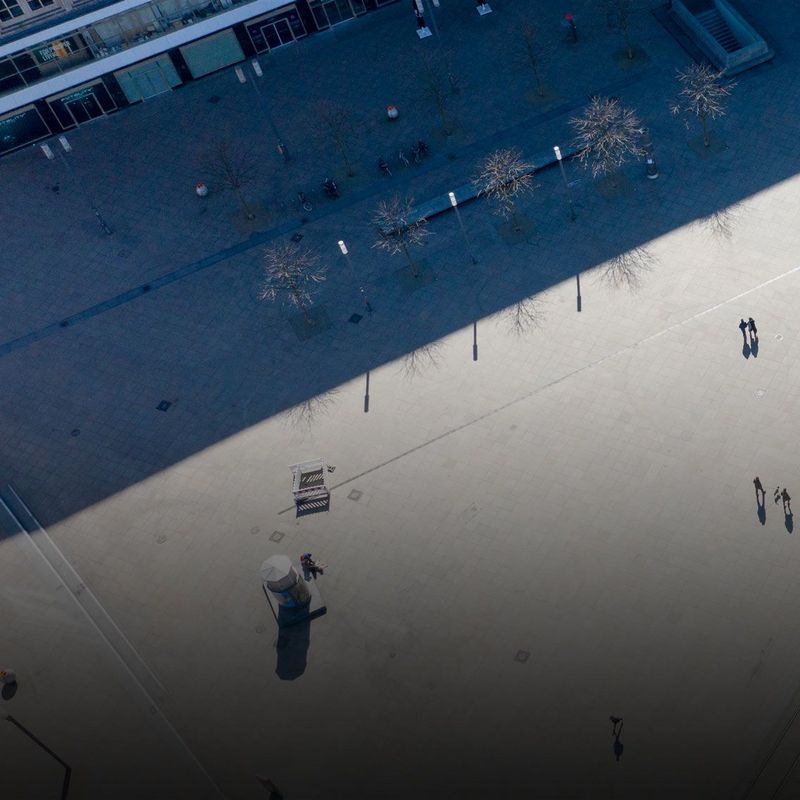28 April 2020
With video conferencing, online gaming and lots of Netflix and its ilk, the coronavirus crisis forced our professional and social life to shift onto the Internet in record time. The question many are anxiously asking is this: is the Internet capable of coping with this abrupt increase in demand? Manuel Sainz of TÜV NORD IT Secure Communications explains how the crisis is affecting things, where bottlenecks might arise and what you can do at home to ensure that the Internet functions as fluidly as possible.
#explore: At the beginning of the coronavirus crisis in Germany and Europe, there were a lot of concerns that, with the abrupt growth of home working and streaming usage, the Internet could get “clogged up”. From your point of view, have the networks come through the fire unscathed?
Manuel Sainz: The short answer to this complex question is yes! The networks are ready and capable of supporting a lot of applications for companies, industries and the financial sector, with all their high capacity demands. The Internet services that most people are using and need in this pandemic situation, on the other hand, require comparatively little network capacity. Even so, a lot of home users are struggling with slower Internet speeds. However, this isn’t primarily the fault of the networks themselves but is down to the configuration of our home networks.
How does the Internet get into our homes in the first place, and what bottlenecks can arise?
You can basically think of the Internet as a triangular constellation: The user wants information or data from a content provider like Amazon or Netflix. The networks are the transport medium which handle this communication. To stream a movie or hold a video conference, we have to receive and send data over the Internet. Our notebooks or smartphones first send a request to the provider’s server of via the net: Please send me this movie.
Our devices are connected to the Internet via an access point. This might be an Ethernet cable or a wireless Wi-Fi connection. Our Internet routers, on the other hand, are connected to a data line via the telephone socket or cable connection – in the past this used to be a copper cable but is now more likely to be a fibreoptic cable. This cable goes either into the basement of our apartment building or directly into the street to the box of an Internet provider. The data cables of the surrounding buildings converge on these grey boxes.
"If a lot of packets on the network are competing to reach a similar destination, with the result that part of the path is blocked, the data are rerouted. So, they have to take a longer route – and what you get is latency, or, in other words, delays in data transmission."
They collect all the data and requests and send them via another line to a regional data management centre. From this data node, the data packets are routed to the nearest node based on the IP addresses of the recipients. Each node forwards the package to its neighbour, meaning that the packet gets to its destination via the shortest possible route. However, if a lot of packets on the network are competing to reach a similar destination, with the result that part of the path is blocked, the data are rerouted. So, they have to take a longer route – and what you get is latency, or, in other words, delays in data transmission.
Why else does the bandwidth fluctuate at home?
When we subscribe to an Internet tariff from a provider, we must always bear in mind that the 16, 50 or 100 megabits per second it offers is always the maximum achievable bandwidth. If I’ve only got one computer connected to this network at home, I’ll probably get this bandwidth.
Often, however, we have several devices online at the same time – mostly via Wi-Fi, out of sheer convenience. These devices all have to share in the same bandwidth. For example, if we want to hold a video conference via our laptop, our smartphone, tablet or Internet radio will also be receiving data from the Internet at the same time. And this would lead to fluctuations even under normal conditions, and these can manifest, for instance, as the picture freezing or breaking up in the video conference. This is because our Internet routers aren’t smart. They don’t distinguish between more important and less important data. Especially in the case of professional videoconferencing, however, it would of course be advantageous if these data were to be sent as a priority.
"Our Internet routers aren’t smart. They don’t distinguish between more important and less important data."
As a user, can I improve my Internet connection?
Even a one-person household often has four devices online at the same time – for families, it’s much more. For this reason, it makes sense to actively manage your own connections at home. Special online tools are available to calculate whether the bandwidth offered with your package is in principle enough to cover the needs of your devices and Internet services. You can also configure your devices to change the frequency with which your phone or tablet checks for new e-mails.
For a video conference, you should always connect your laptop directly via an Ethernet cable if you can. This is then the only path from the computer via the router to the Internet. Wi-Fi, on the other hand, uses the air as a transmission medium. And you share your air with the neighbours, of course: OK, so the router will ignore the specific requests of other routers from adjacent apartments, but, as with the radio, you will get interference signals.
And because everyone’s at home due to the pandemic, a lot of people are obviously going to have connection problems. The advantage of Wi-Fi, which is that it operates under free licence, becomes a disadvantage in this kind of situation. This means that any device can access this frequency. And this frequency gets very busy when we’re all working at home. You can circumvent this problem by using a cable connection.
And what if everything is okay with my bandwidth and my devices but the streaming service or video conference is still breaking up?
In this case, the cause of the problem might lie with the content provider itself. When streaming providers such as Netflix, Amazon or Disney+ rent or build data centres in Europe, they calculate in advance how many users are likely to want to access their content simultaneously at peak times. On this basis, they decide how many servers they need – and this is a crucial calculation since servers are very costly. In most cases, the providers opt for the most cost-effective option. So, they don’t build supercomputer centres to cover exceptional scenarios like a pandemic. After all, these would only be used in exceptional cases but are always going to cost money.
Now, however, the unforeseen situation has arisen that we’re all at home, and a lot of people are requesting video conferencing services from a provider at the same time or watching the same movie on a streaming service. This situation is similar to the denial of service (DoS) attack that hackers use to paralyse a website: the server is deliberately bombarded with so many requests that the system can no longer handle the tasks. Even if, in the present case, it’s genuine users who are entitled to request this content, the servers respond in the same way as in a DoS attack – they get overwhelmed with the large number of requests and can then collapse.
This increased demand is also amplifying the security risks. Free video conferencing tools may be very convenient. But the more people use them, the more vulnerable they become, since hackers also want to take advantage of this exponential increase in demand. Users should therefore pay increased attention to what software they install on their home computers or tablets and, if they aren’t absolutely sure, opt for a safer alternative.
"This increased demand is also amplifying the security risks. Since hackers also want to take advantage of this exponential increase in demand."
To what extent is there still room for improvement on the part of the networks to allow them, for example, to cope better with such exceptional situations?
There is indeed room for improvement – and the greatest potential here lies in a fundamental change in the structure of our hardware-based networks. Till now, we’ve always gradually updated the networks over the years, adding patches and replacing or adding hardware elements.
But even if we fully equip big cities with fibre optic cables, if the cables used in rural areas are still out of date, this will continue to lead to connection problems. Because a network is only as fast as its slowest path. As long as our networks are still hardware-based, it will only ever be possible to make piecemeal improvements.
That’s why we need to make the networks smart. And to do this, we need to virtualise all their elements and components, in the same way as we have replaced analogue pocket calculators with digitalised versions on our smartphones. After all, if we virtualise the functions of the network, we’ll be able to remotely update and adapt it in real time to deal with bigger demand, for example.
So far, we’ve been forced to adapt the infrastructure or send out an engineer, which costs time and money. And this smart and virtual network is 5G. This is also the reason why 5G isn’t just an evolution of 4G, but a new and different concept. Virtualising all the components in a network, i.e. translating them into software, of course takes time and requires fundamental changes to the structure of the network. Which is why it will take quite a while for us to build up a real 5G network.
About
© TÜV NORD
Manuel Sainz is a telecommunications manager at TÜV NORD IT Secure Communications in Berlin. The telecommunications engineer’s principal areas of work are IT security for 5G, Industry 4.0 and the Internet of Things. For Sainz, cybersecurity doesn’t just mean strong passwords: it also means being able to provide users securely with the content they want in any situation. “The coronavirus crisis in particular is showing us how important IT and network communications are for us as a society and for the mental health of each and every individual. This is because they give us the opportunity to stay in touch with other people even from home and in times of restricted contact.”



